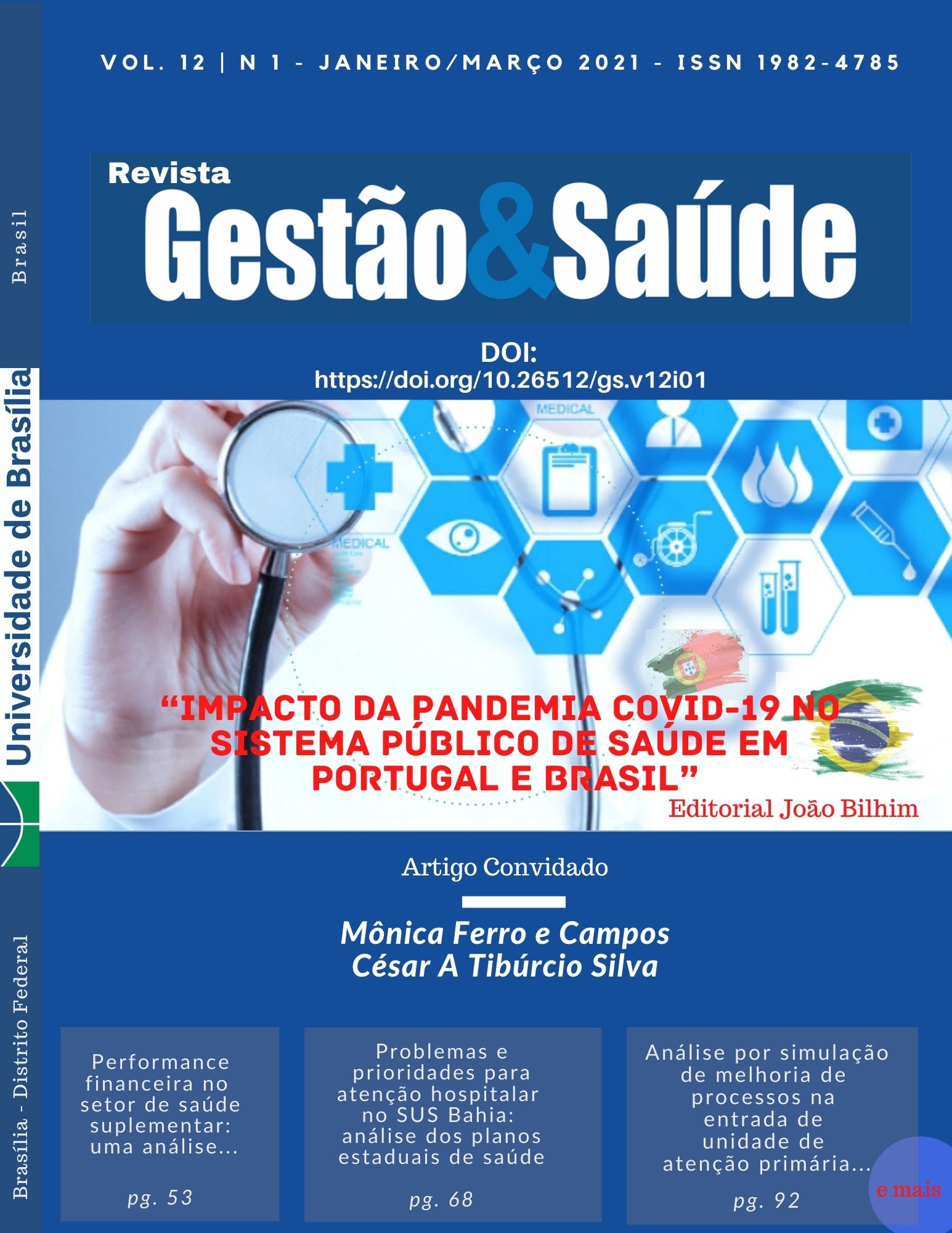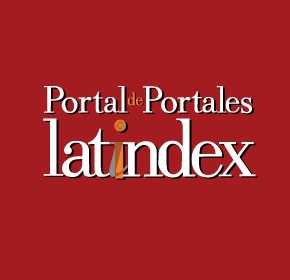Analysis by simulation of process improvement at the entrance of a primary care unit
DOI:
https://doi.org/10.26512/gs.v12i01.32821Keywords:
Primary Health Care, Computer Simulation, Supply & distribution, Statistical Analysis, Health Services AccessibilityAbstract
This article analyses a process redesign proposal at the entrance to a primary care unit in Rio de Janeiro city. The main redesign is the unification of queues, instead of having users redirected to a specific queue according to their primary care team. Data collected in field visits were used to build a simulation model. Impacts were analyzed regarding the average waiting time in queue, the average size of queues, and the occupation rate of the reception counters. Results indicate a drop in 89,9% of the average waiting time in queue, from 465,5 seconds to 47,2 seconds. The average size of queues was, correspondently, reduced from 0,9 users to 0,6. Also, the average occupation rate of counters was raised from 56,9% to 67,4%, raising productivity without overloading workers. Future studies could explore the consequences of relaxing restrictions on the premises of the model and the replicability of the results on similar healthcare units.
Downloads
References
Lippi MC. Desempenho de operações e efetividade da prestação de serviços públicos [dissertação]. Rio de Janeiro: Instituto Alberto Luiz Coimbra de Pós-Graduação e Pesquisa de Engenharia (COPPE), Universidade Federal do Rio de Janeiro. 2016.
Mendes EV. O cuidado das condições crônicas na atenção primária à saúde: o imperativo da consolidação da estratégia da saúde da família. Brasília: Organização Pan-Americana da Saúde. 2012.
Comino EJ; Davies GP; Krastev Y,;Haas M; Christl B; Furler J; Raymont A; Harris MFA. Systematic review of interventions to enhance access to best practice primary health care for chronic disease management, prevention and episodic care. BMC Health Services Research. 2012; 12(415).
Jacobson SH; Hall SN; Swisher JR. Discrete-event simulation of health care systems. In Patient Flow: Reducing Delay in Healthcare Delivery. 2006: 211-252.
Fone D; Hollinghurst S; Temple M; Round A; Lester N; Weightman A; Roberts K; Coyle E; Bevan G; Palmer S. Systematic review of the use and value of computer simulation modelling in population health and health care delivery. J Public Health Med. 2003; 25( 4 ): 325-335.
Zhang X. Application of discrete event simulation in health care: a systematic review. BMC Health Services Research. 2018; 18.
Günal MM; Pidd M. Discrete event simulation for performance modelling in health care: a review of the literature. Journal of Simulation. 2010; 4: 42-51.
Aziati, AN; Hamdan NSB. Application of queuing theory model and simulation to patient flow at the outpatient department. In Proceedings of the International Conference on Industrial Engineering and Operations Management Bandung. 2018 Mar.
Ordu M; Demir E; Tofallis C. A decision support system for demand and capacity modelling of an accident and emergency department. Health Systems. 2019 Jan; 9( 1 ): 31-56.
Hasan I; Bahalkeh E; Yih Y. Evaluating intensive care unit admission and discharge policies using a discrete event simulation model. SIMULATION. 2020 Apr; 96( 6 ): 501-518.
Marquezine AC; Soares de Bem NF; Nazaré TB; Oliveira PWS. A case study through queue simulations of a basic health center. International Journal of Engineering Trends and Technology. 2020 Jun; 68( 6 ): 22-27.
Al-Mashraie M; Alshaebi A; Alshraideh H; Essa MB. Improving patient discharge process using discrete event simulation: A case study. In Proceedings of the 2016 Industrial and Systems Engineering Research Conference H. Yang, Z. Kong, and MD Sarder, eds. 2016 May; 2283-2288.
Banks J; Carson JS; Nelson BL; Nicol DM. Discrete-Event System Simulation. New Jersey: Prentice Hall. 2010.
Sokolowski JA; Banks CM. Principles of modeling and simulation: A multidisciplinary approach. New Jersey: John Wiley & Sons. 2009.
Law AM. Simulation modeling and analysis. New York: McGraw-Hill. 2013.
Ross S. Simulation. California: Academic Press. 2013.
Siegel AF. Practical business statistics. Cambridge: Academic Press. 2016.
Downloads
Published
How to Cite
Issue
Section
License
Copyright (c) 2021 ELECTRONIC JOURNAL MANAGEMENT AND HEALTH

This work is licensed under a Creative Commons Attribution-NoDerivatives 4.0 International License.
I declare that this article is original and has not been submitted for publication in any other national or international journal, either in whole or in part. I further declare that once published in the Electronic Journal Management and Health published by the University of Brasília, it will never be submitted by me or any of the other coauthors to any other means of scientific dissemination.
Through this instrument, in my name and in the name of the other coauthors, may I soon copy the copyright of the article to Electronic Journal Management and Health and declare that I am aware that failure to comply with this commitment will subject the violator to penalties and penalties Law of Protection of Rights Authorities (Nº9609, of 02/19/98).







